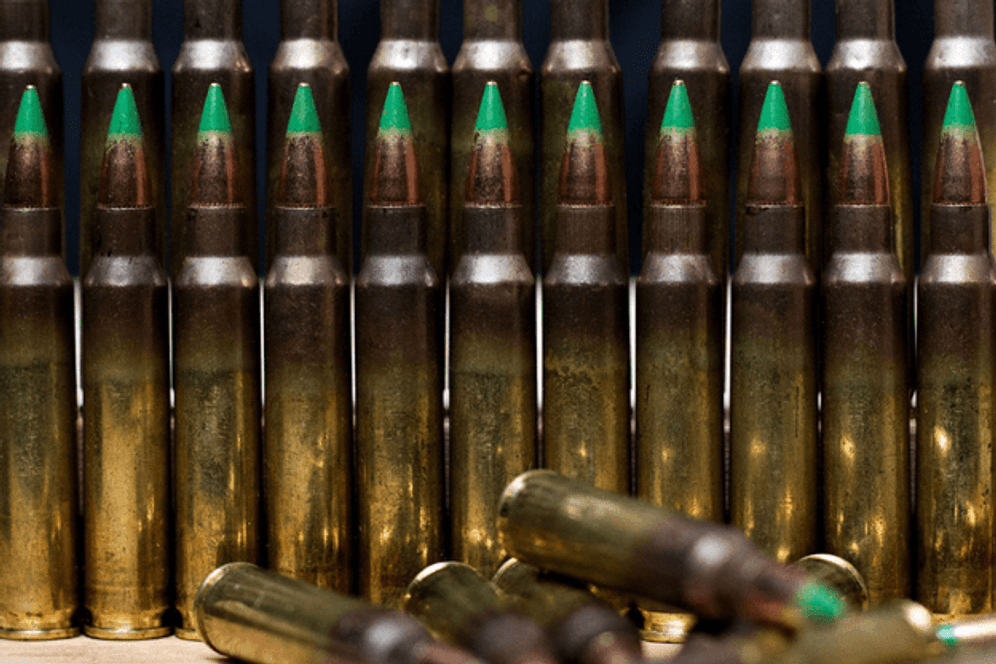Spend enough time around 5.56x45mm NATO cartridges and eventually you will come to realize that a lot of this ammo, especially surplus ammo that was loaded for the military, is color-coded.
There are lots of different colors that are used to indicate the type of bullet loaded into the cartridge and thereby what it is useful for, so we’ll cover some of the more common ones here.
Green Tip 5.56
One of the more commonly encountered 5.56 rounds, especially if you frequently purchase military surplus, is green tip 5.56.
Green tip 5.56 is commonly called, but is not armor-piercing, though it does have a steel penetrator insert in the nose of the bullet. It is “light armor piercing” or LAP, and designed to penetrate light barriers - not armor plate.
In fact, green tip 5.56, despite its steel insert, does not even reliably penetrate AR500 plates - though it easily damages them.
All the same, because of the steel tip, green tip 5.56 is commonly not allowed at ranges because it does a lot of damage to steel targets, target frames, and back stops, on top of the fact that it produces a serious risk of ricochet.
With that said, green tip 5.56 is commonly encountered on the civilian market, and often, you can get a bulk deal on green tip 5.56 and it’s pretty cheap. Just make sure that the place you intend to shoot it allows it. Many ranges do not.
Black Tip 5.56
Black tip 5.56 actually is armor-piercing, and is made with a hardened penetrator core or tip. This penetrator insert is usually made of hardened steel but in the case of 5.56 it is usually tungsten or tungsten carbide.
This penetrator insert does two things; it adds mass (tungsten is considerably denser than lead) and it hardens the bullet, preventing it from disrupting on impact.
This gives black tip 5.56 a significant ability to penetrate armor plate commonly encountered in combat environments, giving it superior ballistics with respect to penetration.
On this count, black tip 5.56 is not commonly available on the civilian market and is mostly reserved for official use.
Blue Tip 5.56
If you find a 5.56 round with a blue tip, you may be looking at an incendiary round. These rounds typically use phosphorus, a hot-burning chemical, to ignite things they strike.
The first incendiary rounds (which were not 5.56) were first developed in WWI, and had a very limited range, but weapons engineering quickly rectified that and later rounds were intended for anti-aircraft applications; if an incendiary round struck an aircraft’s fuel tank, it would quickly bring it down.
However, it is important to note that not all blue-tipped ammo is incendiary, since some bullets have polymer tips that are blue-colored. In the case of a polymer tip, the bullet is not incendiary and is likely to perform similarly to a hollow point.
Orange or Red Tip 5.56
Orange or red tip 5.56 bullets - assuming they are not polymer tipped - indicate tracer rounds. Tracer bullets are made with a pyrotechnically active compound at the base, usually magnesium, strontium or chlorine (or some mixture).
When the bullet is fired, the base ignites and leaves a bright streak in the air, indicating its arc. This shows where the bullet is fired, offering visual feedback to the shooter on the trajectory of his shot.

“Gray” Tip 5.56 or .223
If you have a 5.56 or .223 bullet with what appears to be a gray tip, look a little closer. That may indicate not that the bullet tip has been painted, but that some of the bullet core is exposed at the nose of the round.
The reason the lead core is sometimes exposed is to increase a bullet’s ability to disrupt on contact with a soft target. It is a way of ensuring hollow point-like performance without compromising stability or accuracy.
Also called soft-point ammunition, these rounds are best for sporting applications like hunting, as the bullets are intended to dump their energy and are not likely to overpenetrate a soft target.
No Color
A 5.56 bullet with no paint on the tip - just a copper jacket - indicates a full metal jacket, or FMJ round. These rounds are low-cost to produce and are among the cheapest 5.56 ammo on the market. They are also stable, accurate, and solid for target shooting, training, drilling, and to a degree, for long-range target shooting.
Stock Up on Green Tip 5.56 Ammo Here
Here to load up on bulk 5.56 ammo? Check out our collections of 5.56 and .223 and bookmark the page, along with our police trade-in specials, so you know to visit whenever you need to restock the ammo cans.

